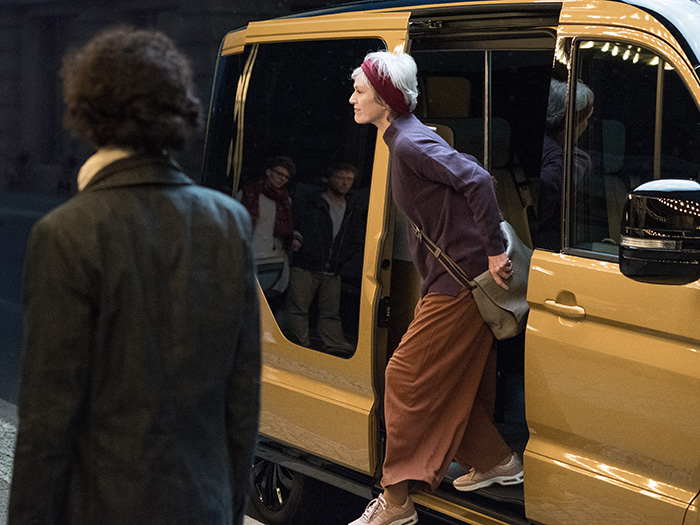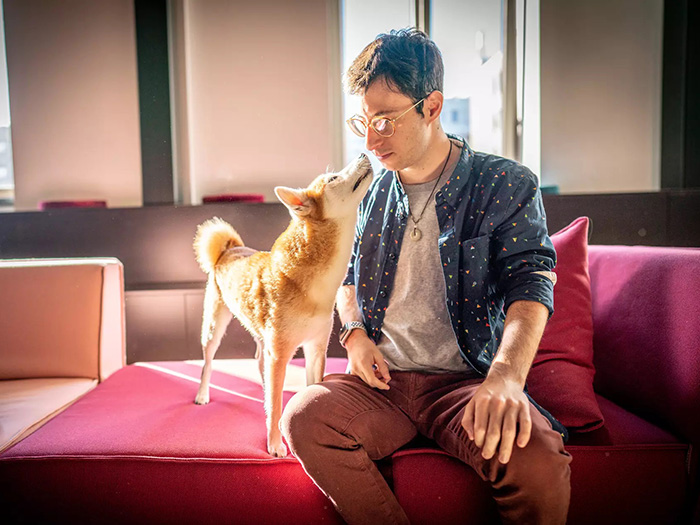MOIA and the algorithm behind intelligent ride sharing
A transport service that adapts in real time to user requirements thanks to a sophisticated algorithm. The team that developing it tells us about its complexities and the challenges to overcome.

MOIA is the Volkswagen Group’s innovative ride sharing service that integrates car pooling (multiple people sharing a route) and ride hailing (booking a single journey through an app). Its goal is to offer mobility solutions to make cities more liveable, cleaner and safer for everyone.
Thanks to a network of intelligent algorithms, many people can travel along the same route, getting in and out at different points. The journey can be booked and paid for through the dedicated app, which shows the vehicles available nearby, the estimated journey time and the cost for the chosen destination. The passenger destinations are combined into a single optimised route, which is then provided by the app itself to the professional driver.
Real-time processes
The algorithm on which MOIA is based has been developed by a team of specialist programmers. Among them are Jan, Jay, Robert and Fabian, who explain what it is like to work on an app that lets the driver know what stops to make and in what order, so as to maximise the efficiency of the service and let everyone get to their destination on time.
“The routes are optimised and modified in real time, with a dual goal: to satisfy all users, and to avoid empty seats”, Jay tells us. “The challenge is to identify the shortest routes while ensuring that the maximum possible number of passengers are being carried at all times”. Robert adds: “The key to meeting it is getting passengers /sharing similar routes into the same vehicle”.
Increasing vehicle numbers

With a greater number of active vehicles it is possible to serve more passengers, but the density in some specific areas is also important to ensure that no one is left hanging around and that the service represents a true alternative to private mobility.
According to Fabian, the main problem to be solved is that “MOIA currently takes requests in real time and on a first-come-first-served basis, regardless of whether the possibility of sharing is higher or lower. So some requests may therefore not be satisfied”. The solution is to increase the number of vehicles in service, because with them the possibilities and combinations increase.
The on-board experience
Another aspect, which is as important as it is complex, is optimising the passenger experience, as measuring satisfaction is significantly more difficult than measuring the computation time of a program. “And there are further variables to take into account,” Robert adds. “For example, quality of service depends on the ability of the driver, as well as traffic conditions”.
This means that the service depends on factors that cannot be controlled, but that still have to be taken into account. The algorithm must find the best passenger-to-vehicle assignment, including both the maximum acceptable wait time at the stop and the potential increase in journey times due to other passengers getting in.
A broad outlook

“MOIA needs people with a broad outlook and skills, who are able to learn quickly and not focus on a single technology”, Fabian tells us. Professionals who are open-minded and willing to share their knowledge: pair programming, for example, helps detect bugs more quickly. “In any case, we don’t work with a dogmatic approach in this team, it’s much more important to be flexible”, Jay tells us.
Over the next few months the team will change again, incorporating people with different abilities, such as software engineers, mathematical optimization specialists, cloud native developers and geospatial computation experts, all able to work towards a common goal and to communicate with one another.
A close-knit and dynamic team
“To work here, it is essential to be motivated and open to change”, says Robert, who then tells us about a typical day, as his colleagues nod in agreement. “Our work here involves a lot of teamwork, we exchange different opinions during meetings focused on specific topics. Every day we compare notes on the processes and issues and, if there are new team members, we obviously do our best to explain our work to them. Sometimes at the end of the day we have a drink together, watch an episode of Game of Thrones or do yoga”.
Source: MOIA
